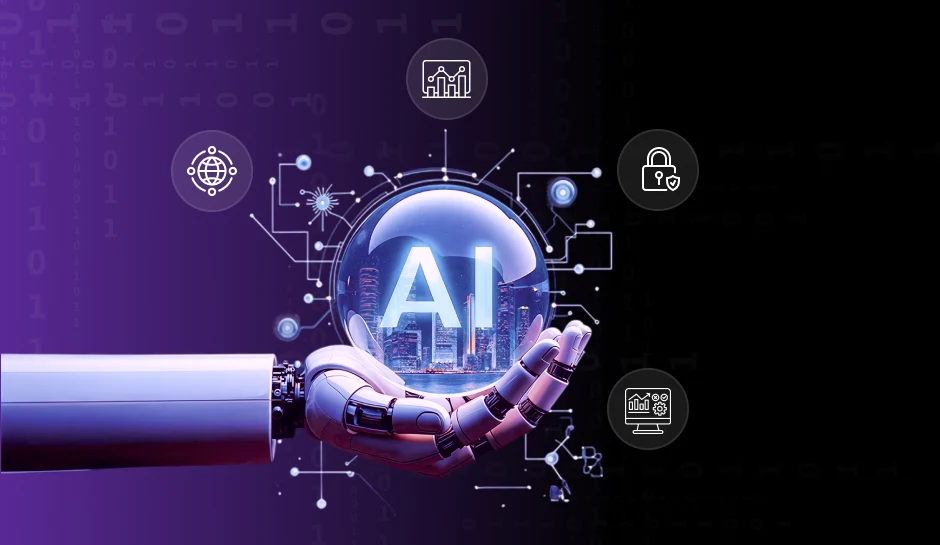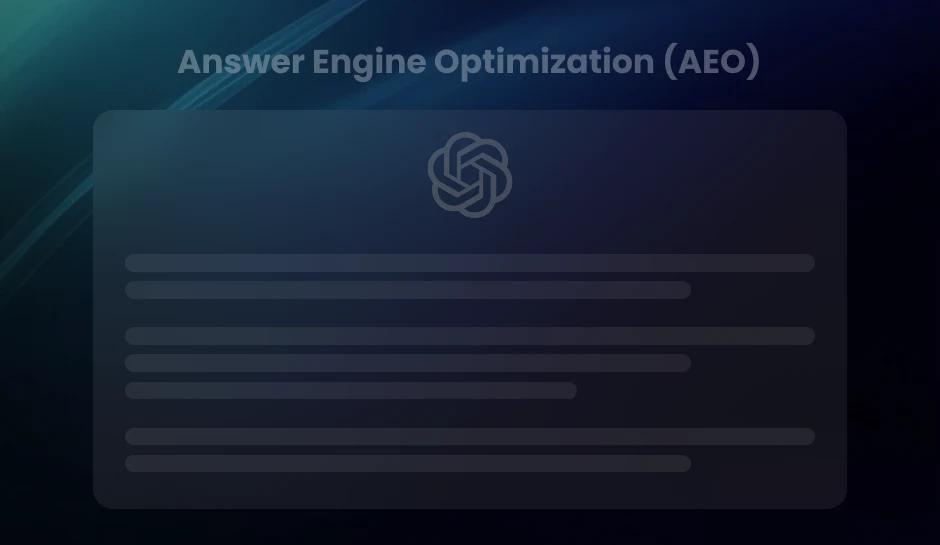Marketing is evolving from a support function to a strategic engine of growth—and fractional CMOs are leading the charge. In this episode, we unpack how modern marketing leaders are building revenue-focused systems without the overhead of traditional leadership structures.
Join host Hershey as she sits down with Aditi, a seasoned growth marketing leader and fractional CMO at DGCL, to explore how companies can move beyond vanity metrics, align with sales, and focus on what really drives pipeline and ROI. From developing a demand gen playbook to measuring true marketing impact, this conversation is packed with insights for marketing leaders at every stage.
By tuning into this episode, you can expect to come away with an understanding of:
- What a Fractional CMO Does—and Why More Companies Are Hiring Them
- The Demand Gen Framework That Drives Pipeline and ROI
- How to Build Alignment Between Sales and Marketing from Day One
- When ABM Makes Sense—and How to Get It Right
- Why Attribution Is Both Necessary and Imperfect
- The Role of AI in Modern Marketing Execution
- Moving Beyond Vanity Metrics to Prove Real Business Value
Featured Speakers:-

Aditi (Pal) Karandikar
Fractional CMO – DGCLAditi is a seasoned revenue-focused marketing leader and fractional CMO who transforms marketing from a cost center into a pipeline engine. With experience at Cisco, VMware, and Blackhawk Network, she brings deep expertise in demand generation, ABM, and go-to-market strategy. At DGCL, she helps companies build scalable marketing engines that consistently deliver ROI and drive growth. Recognized as a Top 45 ABM Marketer, Aditi has helped startups secure funding, drive acquisitions, and achieve 6x returns on marketing investments.

Harshika Chadha
Lead Product Manager – DiGGrowthHarshika is a seasoned product manager with a passion for business transformation, design thinking, technology, marketing trends, SaaS security, and human-computer interactions. What interests her most is the intersection of these fields, which is why she stays on top of the latest industry insights to uncover strategies for success in today's dynamic business landscape.
More From Our Content Repertoire:
- Demystifying Account-Based Marketing and Its Core Metrics
- Marketing ROI Calculation: The Ultimate Guide to Measuring Success
- Mobile Attribution Platforms: Aligning Marketing Spend with Business Growth
Transcript
0:11:
So hello and welcome to another episode of the revenue focused marketer where we discuss anything and everything related to marketing as well as data.
0:20:
I’m your usual host, Hershey, and today I’m joined with a very esteemed guest.
0:25:
Her name is Aditi.
0:27:
So Aditi, thank you so much for joining us here today.
0:30:
Thank you for having me on, Hershey.
0:32:
I really appreciate the time here with the audience.
0:35:
Yeah, so just a little bit about Aditi.
0:38:
She is a fractional CMO and a growth.
0:40:
Marketing leader at DGCL and she’s had a ton of experience kind of leading the space of demand generation, working as a CMO so she’s like, you know, able to really help us answer a lot of the questions that we might have here today.
0:55:
But before we kind of dive into the questions, I would love to kind of start about like, you know, learning a little bit more about your journey.
1:03:
Maybe we can start off like, you know, what made you transition from, you know, traditional marketing roles to Becoming a fractional CMO and just learning more about your experience.
1:13:
Well, the journey started in India actually, where I was in international business, serving from Kalyani Group of companies or clients all over the world.
1:23:
I was in import and exports, moved to Silicon Valley in 2000, and that’s when I had to reinvent myself from the fact that I was on a visa and in a new country, a new mom.
1:36:
So that was quite a journey getting off the.
1:38:
Mommy track and reinventing what I wanted to do next with my life.
1:43:
And I gravitated towards digital marketing.
1:45:
So I started my journey here in Silicon Valley with the agency, but quickly then moved over to the client side.
1:52:
So I’ve worked with companies, big and small, in tech, , technical fields like Cisco, eBay, as well as mid-size companies like, you know, Shortel, which is now Mitel.
2:03:
After a while, , you know, I always try to encourage myself.
2:08:
To step out of my comfort zone to learn something new.
2:10:
So, , starting with search, whether it was SEO paid search, I gravitated towards HubSpot market or emails, and so on and so forth.
2:20:
But then I moved into more strategic roles after VMware when I became the first person in a company called Parnassus, which is now Vidura.
2:29:
It’s a startup.
2:30:
It’s a mature startup owned by companies which were VCs, but it morphed into a PE owned company.
2:37:
And there I was responsible for starting the demand generation fun function from scratch, the processes, the tech stack, everything to deliver pipeline for sales to close.
2:49:
And from there onwards, I have headed teams in different companies in Arcserve as well as Black Hawk Net.
2:57:
which is a fintech company, managing teams from sizes 2 to 30 people globally with disparate teams across the globe, mainly as a head of marketing or marketing ops, demand generation, and in some cases, I also managed SDRs, so it was kind of blurred lines between stakeholders and sales and me.
3:17:
, then I decided to take a personal break to go back to India to take care of my dad after COVID.
3:23:
And so then I thought, you know, why don’t I become a fractional CMO?
3:28:
and kind of ended my corporate full time gig to go into my own agency and CMO services as a consultant.
3:36:
And here we are.
3:37:
That’s such an incredible journey and clearly, you know, you’ve gained.
3:42:
So much diverse experience.
3:43:
So I loved hearing about that.
3:45:
I also started my journey in India and then moved to the Silicon Valley.
3:49:
So mine is kind of similar to yours in that sense of just, you know, being in a different culture and then kind of pushing yourself to, you know, really find what’s best for yourself, sometimes starting off with jobs that you don’t necessarily align with, but those can be kickstarting points to, you know, really taking.
4:07:
Where you want to be.
4:08:
So thank you so much for sharing about your journey.
4:10:
A lot of marketers throw the word demand gen out there, right?
4:15:
So what’s your playbook for building a real results driven demand engine?
4:20:
So I have a framework where, , that helps me hit the ground running with multiple clients.
4:25:
When I onboard a new client, it’s very easy to apply the framework because it’s very templatized and Most of the problems I see from listening to their struggles is kind of not very different from what I’ve seen in other clients.
4:40:
So it’s a very agnostic, irrespective of the vertical skill set that does port over to other companies of different sizes.
4:47:
So I think what I try to do is look at it holistically with a strategy in mind.
4:52:
It’s not reactive, like, hey, let me do your SEO or I can do your.
4:57:
search.
4:58:
So that’s very agency like in the sense that it’s very ad hoc.
5:02:
Rather than that, I look at it from the inbound, outbound.
5:05:
Do they need ABM?
5:07:
Do they want an integrated campaign tools from my toolit should apply here in this case, depending on who the audiences that they’re going after, what do they want to achieve, what level of maturity the company is.
5:21:
Sometimes I have very steal.
5:22:
More companies come to me, whereas I have others who are very mature, late stage, or, you know, they, so it does matter, do they have product market fit already, or they still kind of noodling around with the hypothesis, which is not really battle tested on the ground.
5:39:
So yeah, I would say it is kind of dependent on the stage of the company and what they want to do, but there is a playbook that I employ.
5:47:
, that looks at it holistically in terms of what levers to pull here to make the goals that they want, whether it’s pipeline or revenue, or, you know, just go to market.
5:58:
Yeah, the holistic approach is definitely important and it’s something that’s often missed out because people just focus on, you know, certain aspects and not the bigger picture.
6:07:
So I’m glad you’re able to kind of pull in the entire customer journey and then then kind of make sense of what needs to be done next.
6:15:
, one thing that I’m sure you’re passionate about and I kind of went through a profile that a lot about was getting marketing out of that cost center box to say and how does one kind of start making that shift because even today, a lot of people kind of focus on vanity metrics and like, you know, see my.
6:35:
Marketing still as just a cost center.
6:38:
This actually started with my Cisco engagement where they were trying to shift that behemoth from a cost center to a revenue generator.
6:48:
Unless marketing is at the table as a revenue generator, they are not taken seriously.
6:52:
It’s like they do the brochures, you know, that was the old thing.
6:56:
But I think it’s come a long way.
6:58:
People realize that the buyer journey is now not about just hitting the website and asking for a meeting with sales.
7:05:
People do a lot of .
7:08:
In research, self-discovery, depending on their pain point or the stages in the bier journey that they are at.
7:15:
And marketing can actually add value in each of these stages much before they come to the brand and say, hey, we need something from you in terms of pricing or a code.
7:25:
So that’s why marketing, if done right, can create the pipeline that sales then converts.
7:31:
So thinking of it as a pipeline creation.
7:35:
For sales to convert.
7:36:
And of course there is even marketing role beyond creating pipeline.
7:41:
It may help accelerate the pipeline, cut down the average sales time to convert a deal or even play alongside sales for lost opportunities or deals, you know, or churn.
7:54:
So marketing does have a full life cycle value nowadays that is well recognized as generating revenue.
8:01:
And if you can show the ROI of marketing, and as a fractional CMO, it’s not just my role to come in and do campaigns.
8:10:
I look at it from the point of view as a fiduciary member of the C-suite.
8:14:
So I talk about, hey, what should be the budget for marketing?
8:18:
Where should we spend for best bang for the buck?
8:20:
What internal team look like?
8:23:
Where are the gaps in their skill sets?
8:25:
What should be given to an outside agency?
8:28:
Or where should we upscale?
8:29:
Where should we use AI for more productivity instead.
8:32:
And then beyond the personnel or the budget, we also want to look at your tech stack and how do we, which tools do we pick up for the long term to future proof as we see the evolution of productivity under AI, right?
8:48:
So a fractional CMO’s role is to guide the C-suite, the CEO, the CEO.
8:54:
or CFO, through all these decisions, so that the foundations of the marketing team is very solid, and then they start producing that pipeline and the revenue growth.
9:04:
Yeah, definitely.
9:05:
And I I love that you kind of mentioned about that alignment with not just your marketing team, but also sales.
9:12:
I’ve seen it within my own experience, but also heard from a lot of people that aligning marketing and sales is one of the most difficult things that they have to do.
9:22:
A lot of people have started implementing roles as like a CRO role, just to kind of mediate the differences between the two teams.
9:30:
But, you know, if you could kind of go back to like a past self, one tip that, you know, you would give yourself about aligning marketing and sales, what would it be?
9:41:
I think I see sales as a stakeholder and it’s my job to make them look good, you know.
9:48:
And what has happened is account based marketing was this whole era of aligning with the accounts that sales wants to conquest, and marketing is joined at the hip, right?
10:00:
So that is something that helped.
10:02:
But even before that, when we had traditional demand generation, demand gen sat between marketing and sales.
10:09:
So it was kind of the bridge, if you will, on between brand and Macom and all.
10:15:
The other functions of marketing and sales.
10:17:
So currently enabling sales, or whether it’s their inside sales teams or their field marketing is a big part of the success of marketing as well, because you don’t want to just throw leads across the fence.
10:30:
You just want to be able to see how conversion looks, the quality, how I be helpful in helping sales close the deal.
10:40:
So that is a journey where I have been validated because I have, when I decided to move out of corporate and start my own, a lot of the past CROs or head of sales have been the ones who brought clients to me.
10:57:
So as a marketer, that’s very validating that they have recommended my work in marketing.
11:03:
Yeah, that’s, that’s amazing actually.
11:06:
And thank you so much for sharing that.
11:08:
I would, I know you kind of talked about like, you know, you’ve worked from like midsize companies to even startups, you know, so you’ve had a variety of experience now.
11:18:
At what stage do you really recommend companies should start investing in ABM?
11:24:
Like, you know, is it like, you know, early on in the process or only when you’re more mature and also So that kind of leads to my next question, which is like, you know, when is it really time to start focusing on that marketing ROI and focus on the analytics aspect of things.
11:41:
I think ABM depends on who your ICP is.
11:45:
So if you are targeting a very niche audience, and you know the list of accounts sales wants to, or the wish list of account sales wants to go after.
11:55:
, then you don’t want to spray and pray with, you know, generic marketing.
12:00:
You’d be hyper targeted towards the list that you want to go after.
12:04:
Only thing I would say is sales may have a wish list, but you want to uncover and add value from marketing a broader list which is actually in market.
12:13:
They might have 1000 companies they want to go after, but it may be that 250 of them are the only ones that will buy in this quarter or this year.
12:21:
So why do you Doing your, you know, warming up of other part of the list.
12:26:
You want to uncover people or companies who are not on the list, but you know that they are a good fit, whether it’s firmographic, demographic, or from the perspective of these are the right fits, technographic fit.
12:39:
And you want to say that these are actually in market and you want to tell sales, yes, they are not on your list, but we are getting the signals that they are good clones of people we have closed in the past.
12:50:
And there is buying intent.
12:51:
So it might be a shorter sale cycle if we hijack the narrator from, let’s say they’re looking at a competitor.
12:58:
So ABM can be early on in a company’s growth if that is the very niche market they’re going after.
13:05:
Usually those suggest a hybrid strategy between traditional demand gen and ABM.
13:11:
You don’t want to put all your eggs in one basket.
13:14:
You want to cast a wider net and be very intense.
13:17:
about sometimes some companies have a higher deal size, which justifies ABM.
13:24:
So that could be the whales that you’re going after through ABM, whereas you have a different play for the smaller deals that they pursue, where it could be more automated rather than a high touch model that ABM requires because ABM requires a certain tool set, which is going to be more expensive.
13:43:
So you need.
13:45:
Inquisition to justify by a higher deal size.
13:48:
In terms of attribution and when should that ROI be measured, I think it’s important for companies to understand that they need to set the foundations right before they get into campaign mode.
14:01:
Sometimes I see, especially new founders being very reactive, they will try something for 3 months and say, oh, it’s not working, but they have not even reached a stable product market fit.
14:13:
But mature companies where they have, you know, hypothesis, they have benchmarks, historical attribution, they can get into more sophisticated plays around multi-channel attribution and things like that.
14:25:
And then kind of noodle around how they want to show ROI.
14:30:
Sometimes they show it by marketing generated pipelines, sometimes they say, while this was an old customer, marketing has helped increase the deal size by land and expand campaigns or upsell, cross.
14:42:
Or they brought in partners or acquired partners or co-marketed with partners on deals.
14:47:
So they might actually be assisting sales in some accounts to grow the account.
14:53:
So marketing may not be the generator of that opportunity, but they might be playing a crucial role in other ways.
15:01:
So marketing influenced pipeline becomes a factor as well for more, , mature companies.
15:07:
Yeah, definitely.
15:08:
And I love that you can also mentioned about attribution here.
15:11:
Right.
15:12:
So when we talk about attribution, is there one type that you prefer or the other, or is it kind of based on like, where the company is at their tech stack and their maturity?
15:23:
And there’s also a lot of tools out there for attribution today.
15:28:
So maybe, you know, if you were inventing a dream tool for attribution, what would you do differently and what would you want them to focus on?
15:36:
So if you have the company, which is having the luxury of a data science.
15:41:
That would be great because there is so much going on in terms of multiple channels in which people engage with brands, right?
15:50:
But we have, let’s say companies which we want to give them the poor man’s equivalent or poor woman’s equivalent of a data science team, then we can go with multi-channel attribution with even Power BI or tools like that that I have worked with for very small companies, Google Analytics is fine enough, you know.
16:10:
What I would tell marketers is to not over obsess because we cannot measure everything end to end, even now.
16:18:
So sometimes there’s a tendency to throw the baby out with the bathwater.
16:23:
Let’s say you can’t measure something, you think that is not working.
16:26:
But what happens is there is a quarterback and assist motion.
16:32:
Some channel might be doing the front end work while somebody else might be doing the assist.
16:38:
So email for example.
16:40:
to your database that you have built, whether it’s in market or HubSpot or any of those databases that you own, emailing them, and maybe the first touch was an event you went to 2 years back, and they convert with regular nurture sequences, right?
16:56:
It’s very hard to show the value of what email does sometimes as the last touch or something that helps convert.
17:04:
But I think people should often find that if they stop one channel, They see a dip overall.
17:11:
Definitely, I think it is very important to, you know, be able to see more than just the surface level.
17:18:
And a lot of times we discuss this within our teams also is like garbage in is really garbage out.
17:26:
So, you know, if you’re not really focusing on getting those foundations right, it’s going to create a lot of problems for you in the future.
17:34:
So I kind of wanted to understand your thoughts on like, you know, , I guess the biggest buzzword now, which is AI, AI, and like, you know, what do you think is real when we’re talking about the space and what do you think is just hype that will pass away?
17:51:
I think in marketing there is definitely areas where AI can be and is being used.
17:57:
It’s more on now then, but it’s still consolidating, evolving.
18:01:
So we have to constantly be learning.
18:03:
So for example, on the SEO side of things, it’s LLM SEO or GEO as it’s called, but then creating blogs, , content, different formats has become so much easier, but we have to not totally have AI.
18:20:
We do have to have a human in the mix.
18:23:
Definitely.
18:24:
As of now, that is definitely the case.
18:26:
But beyond SEO also infiltrating every aspect, whether it’s sequencing with LinkedIn, email, and voice as an AISDR kind of approach, or it is optimizing for conversion, paid ads as well.
18:42:
We also see that we’re using to uncover person level info on who’s visiting the website in an anonymous.
18:51:
before they fill a form or get become known to us as a lead.
18:55:
And that helps the outbound motion proactively if you can enable SDRs to call people after uncovering who’s coming to the website, but not engaging and leaving and if you can chat with them well and good in real time.
19:08:
So in every aspect of marketing now, we are seeing AI increasing productivity, but we also have to futureproof by seeing how to rank for, let’s say, Which is on perplexity or chat GPT or GPT beyond how we are ranking on Google, which is still the dominant player, but how does 2026 and beyond look, we don’t know.
19:30:
So we have to constantly be testing and scaling those efforts.
19:35:
Yeah, I think it’s a wonderful point that you touched upon, which is changing rapidly now and like, you know, Google was everybody’s go to and it’s starting to pivot now.
19:46:
Like I’m sure it’s still the Majority of people are still going on Google, but even Google now has like no AI generated for things that sort of pop up.
19:56:
So instead of having for a lot of people to scroll through multiple different links, people are starting to just focus on the answer that’s generated by AI first.
20:05:
So it’s safe to say that, you know, the future of search is definitely evolving and I’d love to, you know, understand if you have any like advice for people, what are Steps that they can still do to, you know, kind of make sure that they’re well drank, their content is still, you know, pushed out there and looked at is EAT still something that, you know, should be the focus?
20:28:
or is that something that’s going to turn ancient soon in your opinion?
20:32:
I think, you know, as you spoke about AI overviews or no click searches, right?
20:37:
I think it’s still about creating that great content, which is informative, written.
20:44:
Methotic manner so that LLMs can pick it up.
20:47:
But also, don’t forget, Google’s algorithm is going to still be strong, and we still have to work with EEAT and make sure that your content is, , you know, really kosher.
21:01:
But what I would suggest is start thinking about crowdsourcing or citations that LLMs look at having content in Reddit or Quora.
21:11:
Mhm.
21:13:
I think in the future, a lot more efficient in terms of ranking on LMMs.
21:18:
Yeah, that’s definitely a good point and something, you know, that people, no matter the size of their company can actually start focusing on.
21:26:
But it’s definitely like safe to say we’re in an exciting phase where like things are changing a lot.
21:32:
So, you know, I know we’re kind of coming to the end of our session here today.
21:36:
What according to you is like, you know, looking ahead in the future, what do you see as things that are kind of going to stick?
21:44:
Is it a genetic AI?
21:45:
Is it still going to be Gen AI or is there, you know, kind of focus that people should be having on something completely different.
21:52:
So I just would love your views on the future of marketing.
21:55:
Future of marketing is the same as the past of marketing, in my opinion, we keep it simple.
22:00:
Companies want their products to sell.
22:02:
And how can marketing help, right?
22:04:
Forget the tactics or the the tech stack or the tools or It evolves.
22:09:
The basic principle is you have to show the value of marketing by taking, let’s say the budget provided for marketing and creating X amount of pipeline or revenue from that.
22:21:
So how you do it may change or evolve, or there will be nuances depending on the company type or depending on, you know, the error.
22:29:
But ultimately, how do you create value for the clients with the CEO or the founder is?
22:36:
Just basically looking for what is marketing bringing to the revenue table.
22:41:
Definitely.
22:42:
Thank you so much for sharing that.
22:44:
I do want to ask you, like, you know, for people that are more interested listeners today that want to know more about you, your work, as well as your agency, how can they really reach you and contact to learn more about you?
22:56:
Sure, I’m on LinkedIn.
22:57:
I’m also having this website, which I can share the details of.
23:02:
So either of those ways.
23:04:
I’m in San Jose, California.
23:05:
If you’re in the region, Happy to chat, but you can share all my contact details and I’ll provide them to you.
23:11:
Perfect.
23:12:
Thank you so much, Ari, for joining us here today.
23:15:
I know I have learned a lot from you and I’m sure our listeners will too.
23:20:
So thank you so much for this session.
23:22:
And I hope we stay connected and thank everyone for, you know, listening in.
23:26:
And we hope to see your thoughts on this episode.
23:29:
Thank you.
23:30:
My pleasure.
23:31:
Bye.
23:31:
Bye.




